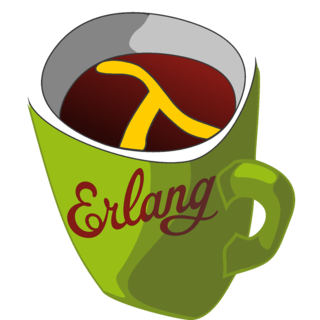
Common Lisp (CL) is a dialect of the Lisp programming language, published in American National Standards Institute (ANSI) standard document ANSI INCITS 226-1994 (S2018). The Common Lisp HyperSpec, a hyperlinked HTML version, has been derived from the ANSI Common Lisp standard.
In computer science, functional programming is a programming paradigm where programs are constructed by applying and composing functions. It is a declarative programming paradigm in which function definitions are trees of expressions that map values to other values, rather than a sequence of imperative statements which update the running state of the program.

Lisp is a family of programming languages with a long history and a distinctive, fully parenthesized prefix notation. Originally specified in the late 1950s, it is the second-oldest high-level programming language still in common use, after Fortran. Lisp has changed since its early days, and many dialects have existed over its history. Today, the best-known general-purpose Lisp dialects are Common Lisp, Scheme, Racket, and Clojure.
In programming language theory, lazy evaluation, or call-by-need, is an evaluation strategy which delays the evaluation of an expression until its value is needed and which also avoids repeated evaluations.
Lambda calculus is a formal system in mathematical logic for expressing computation based on function abstraction and application using variable binding and substitution. Untyped lambda calculus, the topic of this article, is a universal machine, a model of computation that can be used to simulate any Turing machine. It was introduced by the mathematician Alonzo Church in the 1930s as part of his research into the foundations of mathematics. In 1936, Church found a formulation which was logically consistent, and documented it in 1940.

Scheme is a dialect of the Lisp family of programming languages. Scheme was created during the 1970s at the MIT Computer Science and Artificial Intelligence Laboratory and released by its developers, Guy L. Steele and Gerald Jay Sussman, via a series of memos now known as the Lambda Papers. It was the first dialect of Lisp to choose lexical scope and the first to require implementations to perform tail-call optimization, giving stronger support for functional programming and associated techniques such as recursive algorithms. It was also one of the first programming languages to support first-class continuations. It had a significant influence on the effort that led to the development of Common Lisp.
The SECD machine is a highly influential virtual machine and abstract machine intended as a target for functional programming language compilers. The letters stand for Stack, Environment, Control, Dump—the internal registers of the machine. The registers Stack, Control, and Dump point to stacks, and Environment points to an associative array.
In programming languages, a closure, also lexical closure or function closure, is a technique for implementing lexically scoped name binding in a language with first-class functions. Operationally, a closure is a record storing a function together with an environment. The environment is a mapping associating each free variable of the function with the value or reference to which the name was bound when the closure was created. Unlike a plain function, a closure allows the function to access those captured variables through the closure's copies of their values or references, even when the function is invoked outside their scope.
In combinatory logic for computer science, a fixed-point combinator, is a higher-order function that returns some fixed point of its argument function, if one exists.
ISWIM is an abstract computer programming language devised by Peter Landin and first described in his article "The Next 700 Programming Languages", published in the Communications of the ACM in 1966.
Curry is a declarative programming language, an implementation of the functional logic programming paradigm, and based on the Haskell language. It merges elements of functional and logic programming, including constraint programming integration.
In computer programming, an assignment statement sets and/or re-sets the value stored in the storage location(s) denoted by a variable name; in other words, it copies a value into the variable. In most imperative programming languages, the assignment statement is a fundamental construct.
In computer programming, a block or code block or block of code is a lexical structure of source code which is grouped together. Blocks consist of one or more declarations and statements. A programming language that permits the creation of blocks, including blocks nested within other blocks, is called a block-structured programming language. Blocks are fundamental to structured programming, where control structures are formed from blocks.

In computer science, conditionals are programming language constructs that perform different computations or actions or return different values depending on the value of a Boolean expression, called a condition.
In some programming languages, eval, short for evaluate, is a function which evaluates a string as though it were an expression in the language, and returns a result; in others, it executes multiple lines of code as though they had been included instead of the line including the eval. The input to eval is not necessarily a string; it may be structured representation of code, such as an abstract syntax tree, or of special type such as code. The analog for a statement is exec, which executes a string as if it were a statement; in some languages, such as Python, both are present, while in other languages only one of either eval or exec is.
In computer programming, the ternary conditional operator is a ternary operator that is part of the syntax for basic conditional expressions in several programming languages. It is commonly referred to as the conditional operator, conditional expression, ternary if, or inline if. An expression if a then b else c or a ? b : c evaluates to b if the value of a is true, and otherwise to c. One can read it aloud as "if a then b otherwise c". The form a ? b : c is the most common, but alternative syntax do exist; for example, Raku uses the syntax a ?? b !! c to avoid confusion with the infix operators ? and !, whereas in Visual Basic .NET, it instead takes the form If(a, b, c).
In a programming language, an evaluation strategy is a set of rules for evaluating expressions. The term is often used to refer to the more specific notion of a parameter-passing strategy that defines the kind of value that is passed to the function for each parameter and whether to evaluate the parameters of a function call, and if so in what order. The notion of reduction strategy is distinct, although some authors conflate the two terms and the definition of each term is not widely agreed upon.
In computing, a meta-circular evaluator (MCE) or meta-circular interpreter (MCI) is an interpreter which defines each feature of the interpreted language using a similar facility of the interpreter's host language. For example, interpreting a lambda application may be implemented using function application. Meta-circular evaluation is most prominent in the context of Lisp. A self-interpreter is a meta-circular interpreter where the interpreted language is nearly identical to the host language; the two terms are often used synonymously.

Lisp Flavored Erlang (LFE) is a functional, concurrent, garbage collected, general-purpose programming language and Lisp dialect built on Core Erlang and the Erlang virtual machine (BEAM). LFE builds on Erlang to provide a Lisp syntax for writing distributed, fault-tolerant, soft real-time, non-stop applications. LFE also extends Erlang to support metaprogramming with Lisp macros and an improved developer experience with a feature-rich read–eval–print loop (REPL). LFE is actively supported on all recent releases of Erlang; the oldest version of Erlang supported is R14.
A CEK Machine is an abstract machine invented by Matthias Felleisen and Daniel P. Friedman that implements left-to-right call by value. It is generally implemented as an interpreter for functional programming languages, but can also be used to implement simple imperative programming languages. A state in a CEK machine includes a control statement, environment and continuation. The control statement is the term being evaluated at that moment, the environment is (usually) a map from variable names to values, and the continuation stores another state, or a special halt case. It is a simplified form of another abstract machine called the SECD machine.



